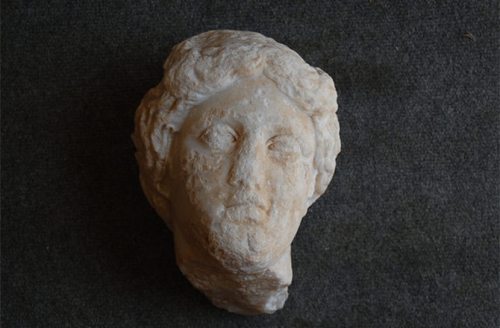A life-sized marble head of the ancient Greek goddess Aphrodite was discovered by a group of archaeologists at a site called Antiochia ad Cragum (Antioch of the cliffs), on the Mediterranean coast, in southern Turkey.
The sculpture of the goddess of love and beauty had some chipping on her nose and face, as it was buried under soil for hundreds of years.
Researchers think her presence could shed light on the extent of the Roman Empire’s wide cultural influence at the time of its peak. As far as the region is concerned, which is dotted with hidden inlets and coves, they believe that it would have been a haven for Cilician pirates, who constitute the same group that kidnapped Julius Caesar and held him for ransom around 75 B.C.
But the pirates’ reign ended when the Roman occupation of the area expanded. The city was officially established around the time of Emperor Nero and flourished during the height of the Roman Empire, researchers say, as reported in Discovery News.
The excavators had been looking for more parts of the largest Roman mosaic ever found in Turkey, that is a 1,600-square-foot (150 square meters) marble floor elaborately decorated with geometric designs, adorning a plaza outside a Roman bath.
The statue head was found lying face-down, during recent excavations this past summer. The researchers think the marble head was likely long separated from its body. Traces of lime kilns have been found near the site, suggesting many statues and hunks of stone would have been burned to be reused in concrete, according to Discovery News.
The presence of an Aphrodite sculpture in the area suggests that Greek and Roman influence had become mainstream in far-flung cities like Antiochia ad Cragum in the first and second centuries A.D., as Michael Hoff, an art historian at the University of Nebraska-Lincoln, who is the excavation’s director, said in a statement.
“We have niches where statues once were. We just didn’t have any statues,” Hoff said. “Finally, we have the head of a statue. It suggests something of how mainstream these people were who were living here, how much they were a part of the overall Greek and Roman traditions,” he explained, adding that Aphrodite’s head is the first fragment of a monumental statue they have found at Antiochia ad Cragum over eight years of digging.
See all the latest news from Greece and the world at Greekreporter.com. Contact our newsroom to report an update or send your story, photos and videos. Follow GR on Google News and subscribe here to our daily email!




